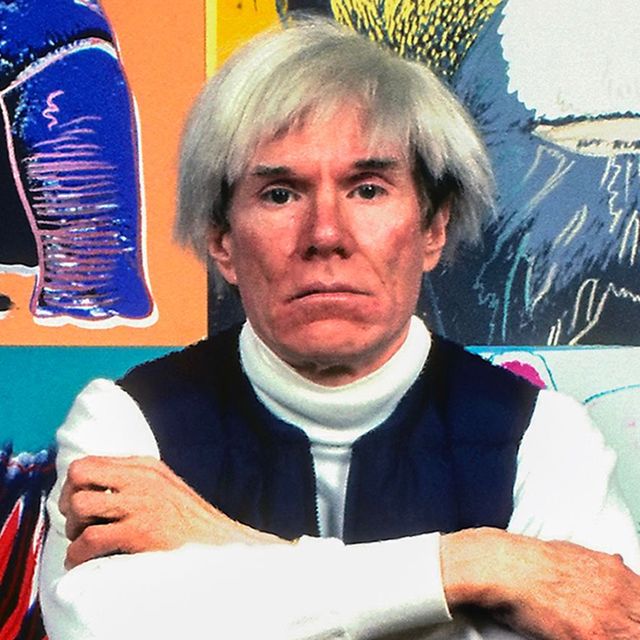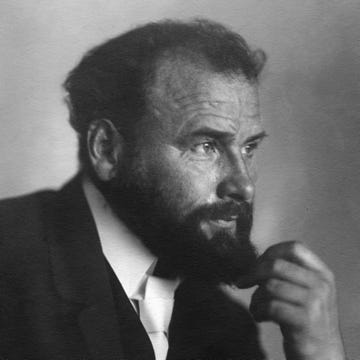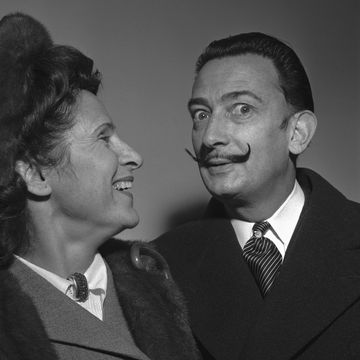(1928-1987)
Who Was Andy Warhol?
Andy Warhol was a successful magazine and ad illustrator who became a leading artist of the 1960s Pop art movements. He ventured into a wide variety of art forms, including performance art, filmmaking, video installations and writing and controversially blurred the lines between fine art and mainstream aesthetics. Warhol died on February 22, 1987, in New York City.
Early Life
Born Andrew Warhola on August 6, 1928, in the neighborhood of Oakland in Pittsburgh, Pennsylvania, Warhol's parents were Slovakian immigrants. His father, Andrej Warhola, was a construction worker, while his mother, Julia Warhola, was an embroiderer. They were devout Byzantine Catholics who attended mass regularly and maintained much of their Slovakian culture and heritage while living in one of Pittsburgh's Eastern European ethnic enclaves.
At the age of eight, Warhol contracted Chorea—also known as St. Vitus's Dance — a rare and sometimes fatal disease of the nervous system that left him bedridden for several months. It was during these months, while Warhol was sick in bed, that his mother, herself a skillful artist, gave him his first drawing lessons. Drawing soon became Warhol's favorite childhood pastime. He was also an avid fan of movies, and when his mother bought him a camera at the age of nine, he took up photography as well, developing film in a makeshift darkroom he set up in their basement.
Warhol attended Holmes Elementary school and took the free art classes offered at the Carnegie Institute (now the Carnegie Museum of Art) in Pittsburgh. In 1942, at the age of 14, Warhol again suffered a tragedy when his father passed away from a jaundiced liver. Warhol was so upset that he could not attend his father's funeral, and he hid under his bed throughout the wake. Warhol's father had recognized his son's artistic talents, and in his will he dictated that his life savings go toward Warhol's college education. That same year, Warhol began at Schenley High School, and upon graduating, in 1945, he enrolled at the Carnegie Institute for Technology (now Carnegie Mellon University) to study pictorial design.
Pop Art
When he graduated from college with his Bachelor of Fine Arts degree in 1949, Warhol moved to New York City to pursue a career as a commercial artist. It was also at this time that he dropped the "a" at the end of his last name to become Andy Warhol. He landed a job with Glamour magazine in September, and went on to become one of the most successful commercial artists of the 1950s. He won frequent awards for his uniquely whimsical style, using his own blotted line technique and rubber stamps to create his drawings.
Campbell's Soup Cans
In the late 1950s, Warhol began devoting more attention to painting, and in 1961, he debuted the concept of "pop art"—paintings that focused on mass-produced commercial goods. In 1962, he exhibited the now-iconic paintings of Campbell's soup cans. These small canvas works of everyday consumer products created a major stir in the art world, bringing both Warhol and pop art into the national spotlight for the first time.
British artist Richard Hamilton described pop art as "popular, transient, expendable, low cost, mass-produced, young, witty, sexy, gimmicky, glamorous, big business." As Warhol himself put it, "Once you 'got' pop, you could never see a sign the same way again. And once you thought pop, you could never see America the same way again."
Warhol's other famous pop paintings depicted Coca-cola bottles, vacuum cleaners and hamburgers.
Portraits
He also painted celebrity portraits in vivid and garish colors; his most famous subjects include Marilyn Monroe, Elizabeth Taylor, Mick Jagger and Mao Tse-tung. As these portraits gained fame and notoriety, Warhol began to receive hundreds of commissions for portraits from socialites and celebrities. His portrait "Eight Elvises" eventually resold for $100 million in 2008, making it one of the most valuable paintings in world history.
The Factory
In 1964, Warhol opened his own art studio, a large silver-painted warehouse known simply as "The Factory." The Factory quickly became one of New York City's premier cultural hotspots, a scene of lavish parties attended by the city's wealthiest socialites and celebrities, including musician Lou Reed, who paid tribute to the hustlers and transvestites he'd met at The Factory with his hit song "Walk on the Wild Side"—the verses of which contain descriptions of individuals who were fixtures at the legendary studio/warehouse in the '60s, including Holly Woodlawn, Candy Darling, "Little Joe" Dallesandro, "Sugar Plum Fairy" Joe Campbell and Jackie Curtis. (Warhol was a friend of Reed's and managed Reed's band, the Velvet Underground.)
Warhol, who clearly relished his celebrity, became a fixture at infamous New York City nightclubs like Studio 54 and Max's Kansas City. Commenting on celebrity fixation—his own and that of the public at large—Warhol observed, "more than anything people just want stars." He also branched out in new directions, publishing his first book, Andy Warhol's Index, in 1967.
READ MORE: How Andy Warhol and Halston Transformed Art, Fashion and Studio 54
In 1968, however, Warhol's thriving career almost ended. He was shot by Valerie Solanas, an aspiring writer and radical feminist, on June 3. Warhol was seriously wounded in this attack. Solanas had appeared in one of Warhol's films and was reportedly upset with him over his refusal to use a script she had written. After the shooting, Solanas was arrested and later pleaded guilty to the crime. Warhol spent weeks in a New York hospital recovering from his injuries and underwent several subsequent surgeries. As a result of the injuries he sustained, he had to wear a surgical corset for the rest of his life.
READ MORE: Learn About Valerie Solanas, the Woman Who Shot Andy Warhol
Warhol Books and Films
In the 1970s, Warhol continued to explore other forms of media. He published such books as The Philosophy of Andy Warhol (From A to B and Back Again) and Exposures. Warhol also experimented extensively with video art, producing more than 60 films during his career. Some of his most famous films include Sleep, which depicts poet John Giorno sleeping for six hours, and Eat, which shows a man eating a mushroom for 45 minutes.
Warhol also worked in sculpture and photography, and in the 1980s, he moved into television, hosting Andy Warhol's TV and Andy Warhol's Fifteen Minutes on MTV.
Death
In his later life, Warhol suffered from chronic issues with his gallbladder. On February 20, 1987, he was admitted to New York Hospital where his gallbladder was successfully removed and he seemed to be recovering. However, days later he suffered complications that resulted in sudden cardiac arrest and he died on February 22, 1987, at the age of 58. Thousands of people attended a memorial for the artist at St. Patrick's Cathedral in New York City.
Legacy
Warhol's enigmatic personal life has been the subject of much debate. He is widely believed to have been a gay man, and his art was often infused with homoerotic imagery and motifs. However, he claimed that he remained a virgin for his entire life.
Warhol's life and work simultaneously satirized and celebrated materiality and celebrity. On the one hand, his paintings of distorted brand images and celebrity faces could be read as a critique of what he viewed as a culture obsessed with money and celebrity. On the other hand, Warhol's focus on consumer goods and pop-culture icons, as well as his own taste for money and fame, suggests a life in celebration of the very aspects of American culture that his work criticized. Warhol spoke to this apparent contradiction between his life and work in his book The Philosophy of Andy Warhol, writing that "making money is art and working is art, and good business is the best art."
QUICK FACTS
- Name: Andy Warhol
- Birth Year: 1928
- Birth date: August 6, 1928
- Birth State: Pennsylvania
- Birth City: Oakland, Pittsburgh
- Birth Country: United States
- Gender: Male
- Best Known For: Andy Warhol was one of the most prolific and popular artists of his time, using both avant-garde and highly commercial sensibilities.
- Industries
- Art
- Film
- Astrological Sign: Leo
- Schools
- Carnegie Institute (Carnegie Museum of Art)
- Schenley High School
- Carnegie Institute for Technology (Carnegie Mellon University)
- Interesting Facts
- Lou Reed's "Walk on the Wild Side" is a tribute to the individuals he'd met at Andy Warhol's "The Factory," including Holly Woodlawn, "Sugar Plum Fairy" Joe Campbell and Jackie Curtis.
- Death Year: 1987
- Death date: February 22, 1987
- Death State: New York
- Death City: New York
- Death Country: United States
Fact Check
We strive for accuracy and fairness.If you see something that doesn't look right,contact us!
CITATION INFORMATION
- Article Title: Andy Warhol Biography
- Author: Biography.com Editors
- Website Name: The Biography.com website
- Url: https://www.biography.com/artists/andy-warhol
- Access Date:
- Publisher: A&E; Television Networks
- Last Updated: March 11, 2022
- Original Published Date: April 2, 2014
QUOTES
- I'd prefer to remain a mystery. I never give my background, and, anyway, I make it all up different every time I'm asked.
- They always say time changes things, but you actually have to change them yourself.
- It would be glamorous to be reincarnated as a great big ring on Liz Taylor's finger.
- My idea of a good picture is one that's in focus and of a famous person.
- Isn't life a series of images that change as they repeat themselves?
- In the future, everyone will be famous for 15 minutes.
- I'm afraid that if you look at a thing long enough, it loses it's meaning.
- Fashion wasn't what you wore someplace anymore. It was the whole reason for going.
- I love going out every night. It's so exciting.
- The idea of waiting for something makes it more exciting.
- I am a deeply superficial person.












